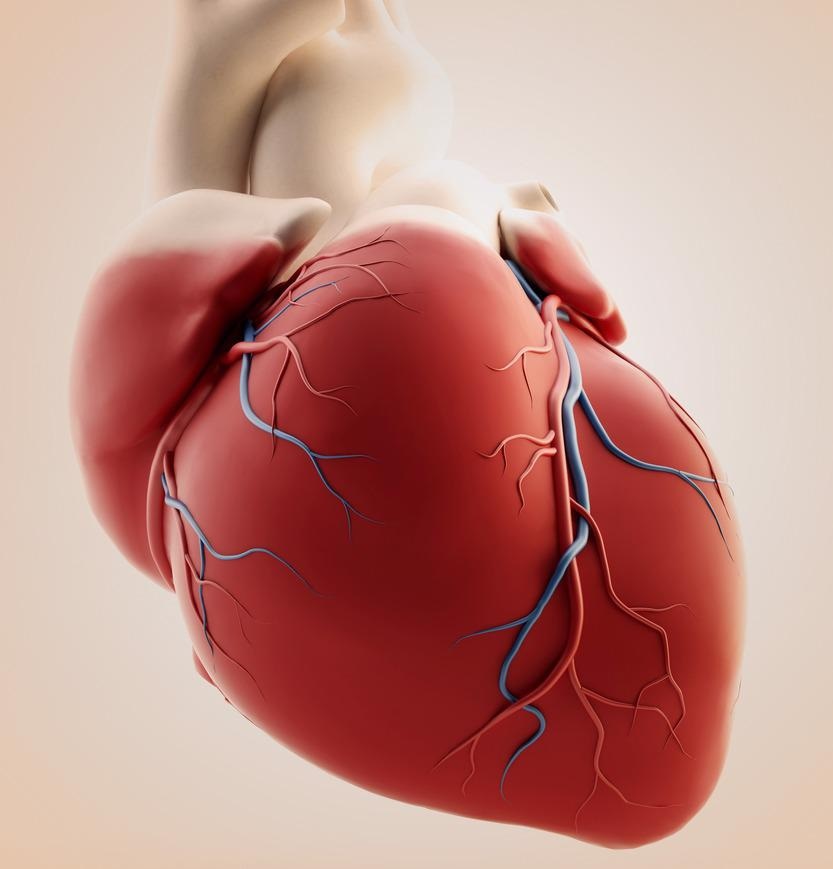 By Surbhi JainReviewed by Susha Cheriyedath, M.Sc.Jun 13 2022
By Surbhi JainReviewed by Susha Cheriyedath, M.Sc.Jun 13 2022In a review recently published in the European Polymer Journal, researchers discussed the utility of metal- and carbon-based nanostructures in injectable conductive nanocomposite hydrogels for cardiac tissue engineering (CTE).

Study: Injectable conductive nanocomposite hydrogels for cardiac tissue engineering: Focusing on carbon and metal-based nanostructures. Image Credit: martan/Shutterstock.com
Background
Cardiovascular diseases (CVDs) are a category of pathological conditions that include coronary heart disease (CHD), congenital heart disease (CHD), cerebrovascular disease (CVD), rheumatic heart disease (RHD), and others, and are one of the leading causes of death worldwide.
When compared to cerebrovascular disease and cardiomyopathy, CHD, being the most frequent form of myocardial infarction (MI), accounted for the majority of mortality in CVD patients. A normal, functioning heart tissue may be replaced by non-functional scar tissue as a result of a MI. Other therapy strategies have been used by researchers to avoid the development of heart failure and to restore damaged tissue in post-MI patients.
In the realm of CTE, various methodologies have been investigated. Scaffolding biomaterials, as one of the components of CTE, are critical for boosting cell survival, restoring cardiac function, and increasing cell retention and engraftment. There has recently been a lot of effort put into designing and fabricating effective scaffolds for heart regeneration. In addition, conductive biomaterials can generate electrical impulses and translate them into coordinated contractions.
About the Study
In this study, the authors focused on the integration of natural and synthetic injectable hydrogels with various electroconductive nanoparticles such as metal and carbon-based. Furthermore, the physical effects of these nanostructures on hydrogels were examined and evaluated in terms of conductivity augmentation and mechanical moduli improvement. The development of an improved future injectable conductive hydrogel for CTE was also discussed.
The team discussed the importance of injectable conductive nanocomposite hydrogels. The effects of injectable conductive nanocomposite hydrogels on cardiac function after a heart attack were characterized in a systematic way. Various nanomaterials employed to produce electrical conductivity in injectable hydrogels, as well as their influence on the hydrogels' physical properties, were evaluated in comparison to genuine cardiac tissue.
The researchers studied whether the proposed nanomaterials could improve the electrical conductivity and mechanical properties of hydrogels, and information on several studies relevant to this topic and their findings were presented. Furthermore, the future outlook for conductive nanostructures employed in CTE was forecasted and addressed.
Observations
Because of their viscoelastic and diffusion properties, hydrogels were the greatest candidates for heart repair and regeneration. Natural and synthetic hydrogels were utilized in CTE and proved their unique combination of advantages and limitations in the supply of topographical features and biochemical characteristics to mimic the properties of native heart tissue.
However, the insufficient appropriate mechanical properties and electrical conductivity in these scaffolds made it difficult for cardiomyocytes to integrate properly, as they played a critical role in intercellular communications, cell maturation, cell-cell interactions, and cell-matrix interactions by incrementing the expression of cardiac-specific proteins and β1-integrin.
Conductive polymers (CPs) could be distributed and polymerized in hydrogel networks to form electro-conductive hydrogels as an alternative. The adhesion and proliferation of H9c2 cells grown on the matrix were excellent. Subcutaneous injection in rats demonstrated biocompatibility and in vivo gel formation of this hydrogel. Tetraaniline, on the other hand, had no effect on the mechanical moduli of hydrogels. Nanoparticle inclusion could be an effective way to improve physical qualities.
Various nanoparticles could be easily integrated into the injectable hydrogel prior to injection and during the production process. As a result, injectable nanocomposite hydrogels could be a potential way to alter the chemical and physical properties of scaffolds to fulfill CTE requirements. The cytotoxicity of these nanomaterials, on the other hand, was a source of concern. Nonetheless, gold nanoparticles outperformed carbon-based nanomaterials in terms of biocompatibility.
Gold nanoparticles entered the cells via endocytosis, which caused no toxicity and a viability rate of more than 90% after 48 hours. Up to a dosage of 5 mg/ml, the MTT assay demonstrated that gold nanospheres and nanocubes were more biocompatible. Furthermore, despite substantial research into CTE, there were few clinical trials and commercial goods in this field as compared to other tissues such as bone, cartilage, and nerve.
The anisotropic structure of the heart muscle made its impedance measurements challenging to interpret in terms of conductivity. Depending on the source, a range of 0.03 to 0.6 S/m for cardiac tissue could be considered.
Conclusions
In conclusion, this study elucidated that basic and integrative research is needed to completely understand the electrical and mechanical properties of cardiac tissue. The authors mentioned that injectable conductive hydrogels are expected to be developed more in the future and will likely replace other forms of scaffolds in cardiac muscle regeneration after MI.
They also stated that future hydrogels could include a variety of conductive nanostructures, including both carbon and metal-based nanostructures, to improve physical qualities such as conductivity and mechanical moduli. The team observed that injectable conductive hydrogels could also be associated with other ways to improve the regeneration outcome, such as oxygen-releasing chemicals, bioactive components, and the creation of new hybrid polymers.
Disclaimer: The views expressed here are those of the author expressed in their private capacity and do not necessarily represent the views of AZoM.com Limited T/A AZoNetwork the owner and operator of this website. This disclaimer forms part of the Terms and conditions of use of this website.
Source:
Pournemati, B., Tabesh, H., Jenabi, A., et al. Injectable conductive nanocomposite hydrogels for cardiac tissue engineering: Focusing on carbon and metal-based nanostructures. European Polymer Journal 111336 (2022). https://www.sciencedirect.com/science/article/abs/pii/S0014305722003408